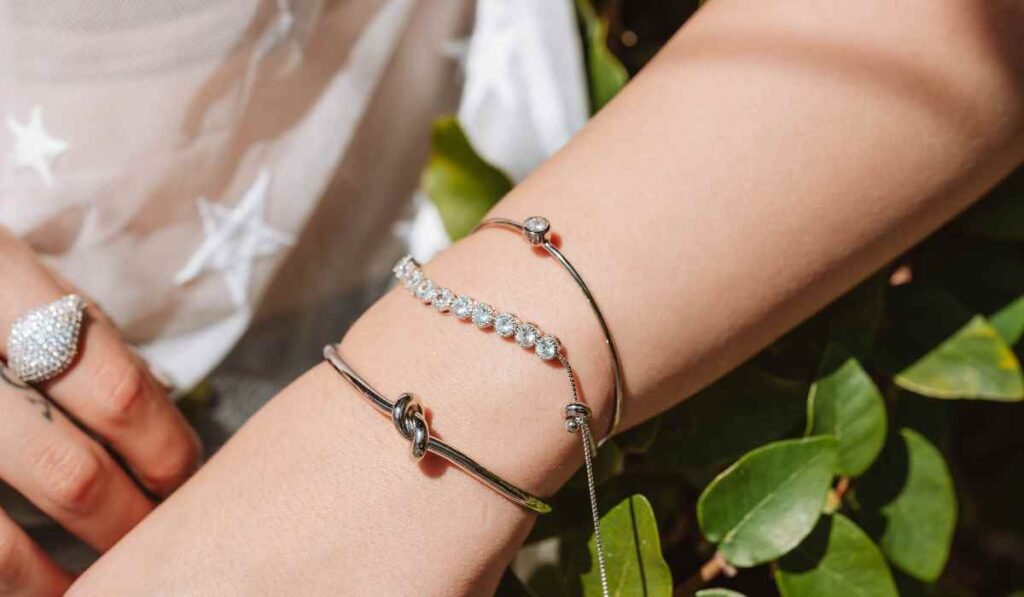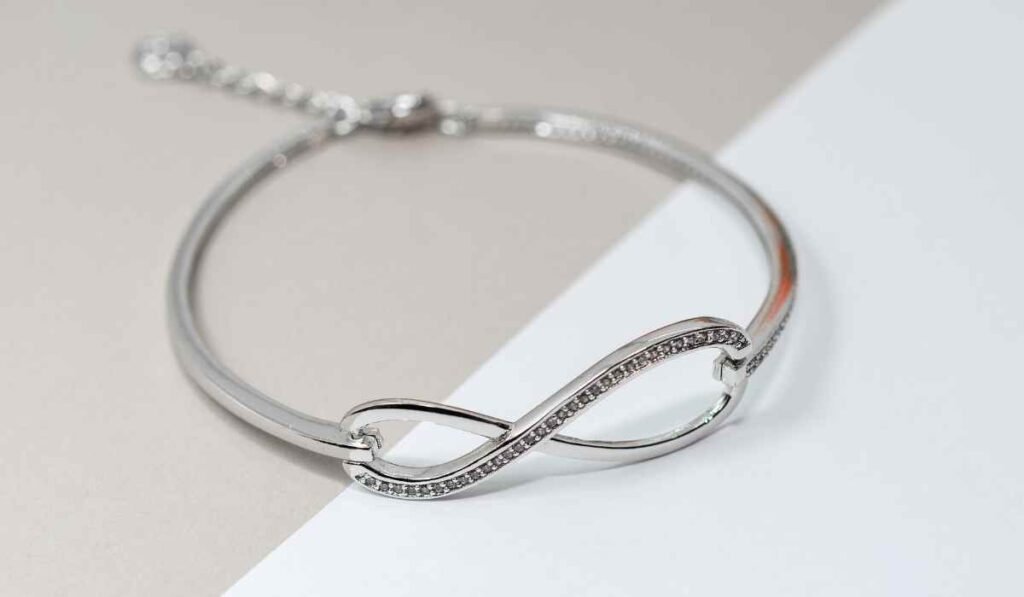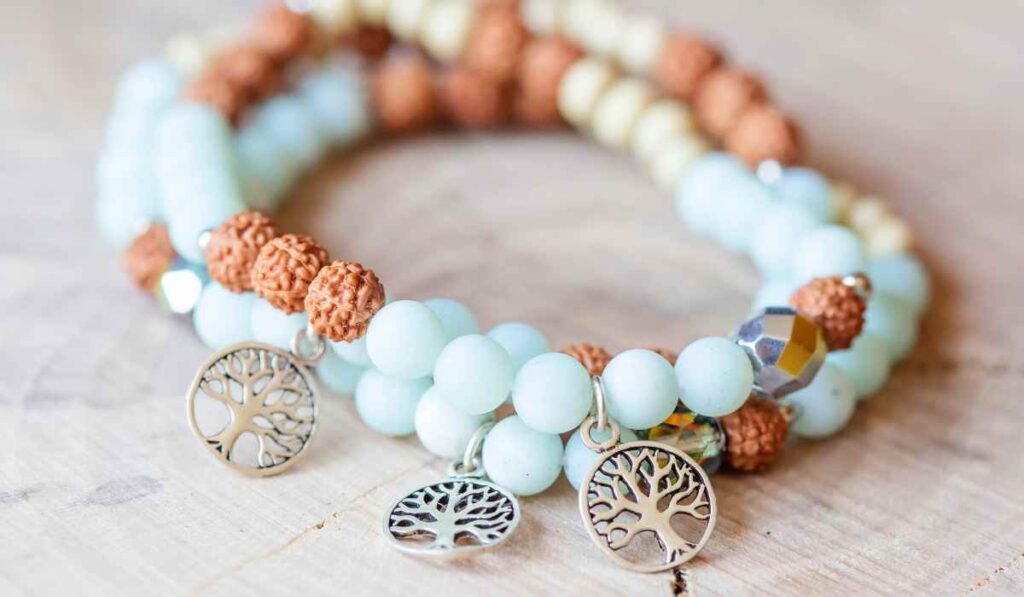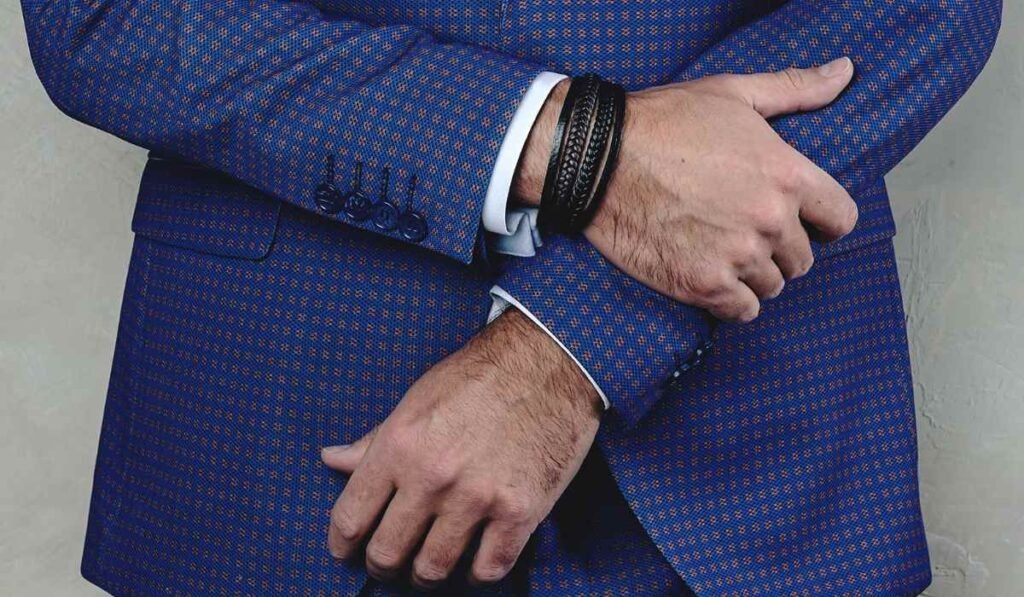Choosing the right bracelet size is like picking the perfect shoe size for your wrist! It’s important because a bracelet that’s too big can slip off, and one that’s too small might feel uncomfortable.
So, in this guide, we’re going to learn how to measure your wrist to find the ideal bracelet size. It’s an easy skill that will help you wear your bracelets comfortably and look super stylish.
Table of Contents
ToggleWhy does bracelet size matter?
Bracelet size matters because, just like shoes, one size doesn’t fit all. A snug fit ensures comfort and prevents your favorite piece from slipping away unnoticed.

Top 5 Types of Bracelets
It’s essential to have a good understanding of the various types of bracelets available on the market. Each type has its own unique characteristics and considerations for sizing. Here is a list of popular bracelet types and some insights into their physical aspects that are crucial for proper measurement.
1. Chain Bracelets
Chain bracelets are versatile and timeless. They consist of interconnected metal links, which can be made from various materials, such as gold, silver, or stainless steel. The length of a chain bracelet is often adjustable using a clasp or extender, making it suitable for a range of wrist sizes.
2. Tennis Bracelets
Tennis bracelets consist of a continuous row of gemstones. Measure your wrist and the length of the bracelet, ensuring a secure clasp to prevent it from falling off.
3. Cuff Bracelets
Cuff bracelets are open-ended and slightly adjustable to fit the wrist. They come in various designs, from minimalistic to intricately adorned. A well-fitted cuff bracelet should sit comfortably without being too tight or too loose, allowing for slight adjustments.
4. Beaded Bracelets
Beaded bracelets are popular for their vibrant and customizable appearance. They feature small beads, which can be made from a wide range of materials, including gemstones, glass, or wood.
5. Leather Bracelets
Leather bracelets come in various styles, from simple bands to intricately braided designs. Leather is known for its durability and rugged charm. Opt for a size that allows for a snug fit initially, as the leather will naturally soften with wear.
Measuring Bracelet Size for Wrist
Achieving the perfect fit is essential when wearing bracelets. Whether you’re purchasing a bracelet for yourself or as a gift, knowing how to measure the wrist correctly is crucial.
There are two fundamental ways to measure wrists for bracelets: wrist circumference and wrist width. We will guide you through both methods, ensuring that you make a well-informed decision.

1. Measuring by Wrist Circumference
Wrist circumference is perhaps the most conventional and widely used method for measuring the wrist. It provides a straightforward way to ensure that a bracelet fits snugly without being too tight or too loose.
How to Measure Wrist Circumference:
- Begin by gathering the essential tools: a flexible measuring tape or a piece of string, a ruler, and a pen.
- Position the measuring tape or string around your wrist, just above the wrist bone. Ensure that it’s not too tight, allowing a bit of breathing room.
- Mark the point where the end of the measuring tape or string overlaps with the other end.
- Lay the measuring tape or string flat next to the ruler to determine the exact measurement.
- Keep in mind that bracelets are typically designed with a bit of slack to provide comfort. However, if you prefer a snug fit, you can choose a bracelet size that matches your wrist’s exact measurement.
2. Measuring by Wrist Width
While wrist circumference is the traditional method, measuring by wrist width is an alternative approach that offers a unique way to select a bracelet that is both comfortable and stylish.
How to Measure Wrist Width:
- Gather your measuring tools, as previously mentioned.
- Instead of wrapping the measuring tape around your wrist, place it flat across the widest part of your wrist, usually right across the wrist bone.
- Make a note of the width in millimeters or inches, depending on your preference.
- When selecting a bracelet using this method, it’s essential to choose a size that accommodates the width of your wrist. This ensures a comfortable fit that allows the bracelet to slide on easily.

Bracelet size for women
Women’s bracelet sizes typically range from Extra Small (XS) to 3X-Large (3X-L), with variations in inches and centimeters. To find the perfect fit, measure your wrist’s circumference and use a size chart as a reference.
An Extra Small (XS) bracelet is around 5.5 inches (14 cm), while a 3X-Large (3X-L) is approximately 8.5 inches (21.6 cm).
| Size | Length (in inches) | Length (in centimeters) |
|---|---|---|
| XS (Extra Small) | 5 – 5.5 inches | 12.7 – 14 cm |
| S (Small) | 5.5 – 6 inches | 14 – 15.2 cm |
| M (Medium) | 6 – 6.5 inches | 15.2 – 16.5 cm |
| L (Large) | 6.5 – 7 inches | 16.5 – 17.8 cm |
| XL (Extra Large) | 7 – 7.5 inches | 17.8 – 19 cm |
| 2X-L (Double Extra Large) | 7.5 – 8 inches | 19 – 20.3 cm |
| 3X-L (Triple Extra Large) | 8 – 8.5 inches | 20.3 – 21.6 cm |
Bracelet size for Men
The right bracelet size is crucial for men, as it impacts both comfort and style. Men’s bracelet sizes generally range from Small (S) to Extra Large (XL), with variations in inches and centimeters. To find the perfect fit, measure your wrist’s circumference and use a size chart as a guide.
A Small (S) bracelet typically measures around 7 inches (17.8 cm), while an Extra Large (XL) is approximately 8.5 inches (21.6 cm).
| Size | Length (in inches) | Length (in centimeters) |
|---|---|---|
| S (Small) | 6.5 – 7 inches | 16.5 – 17.8 cm |
| M (Medium) | 7 – 7.5 inches | 17.8 – 19 cm |
| L (Large) | 7.5 – 8 inches | 19 – 20.3 cm |
| XL (Extra Large) | 8 – 8.5 inches | 20.3 – 21.6 cm |
| 2X-L (Double Extra Large) | 8.5 – 9 inches | 21.6 – 22.9 cm |
| 3X-L (Triple Extra Large) | 9 – 9.5 inches | 22.9 – 24.1 cm |
Bracelet size for children
Children tend to be more active, and a loose-fitting bracelet can easily slip off while they play, run, or engage in various activities. To address this, it’s essential to measure your child’s wrist circumference accurately and choose a size that provides a snug yet comfortable fit.
- Infants and Toddlers (0-2 years): For the littlest ones, a bracelet size of around 4 to 4.5 inches (10.2 to 11.4 cm) is typically suitable. It’s crucial to have a secure closure to prevent choking hazards and discomfort.
- Preschoolers (3-5 years): As children grow, a bracelet size of about 5 to 5.5 inches (12.7 to 14 cm) is often appropriate. Look for adjustable or elastic bands for easy wear.
- Elementary School (6-10 years): Children in this age group usually wear bracelets ranging from 5.5 to 6 inches (14 to 15.2 cm). Opt for secure clasps or closures, considering their active play.
- Preteens (11-12 years): Preteens can typically wear bracelets with sizes of 6 to 6.5 inches (15.2 to 16.5 cm). Look for adjustable options for a better fit.
- Teenagers (13+ years): Teenagers usually wear bracelets sized from 6.5 to 7 inches (16.5 to 17.8 cm). Pay attention to their personal style preferences and activity levels when choosing designs.
| Age | Length (in inches) | Length (in centimeters) |
|---|---|---|
| 0 – 2 Years | 4 – 4.5 inches | 10.2 – 11.4 cm |
| 3 – 5 Years | 5 – 5.5 inches | 12.7 – 14 cm |
| 6 – 10 Years | 5.5 – 6 inches | 14 – 15.2 cm |
| 11 – 12 Years | 6 – 6.5 inches | 15.2 – 16.5 cm |
| 13+ Years | 6.5 – 7 inches | 16.5 – 17.8 cm |

Considerations for the Perfect Fit
While measuring your wrist, be mindful of these common mistakes:
Measuring Too Tight: A common error is measuring your wrist too tightly. This can result in a bracelet that feels constricting.
Neglecting Bracelet Style: Each bracelet style has its own ideal fit. Ignoring this can lead to discomfort or an unflattering look.
Ignoring Personal Preferences: Remember, it’s not just about numbers. Consider your personal preference for how you want the bracelet to sit on your wrist.
Here are some of the commonly asked questions:
Can I measure my bracelet size with a regular ruler?
Absolutely! A ruler can work wonders in a pinch. Just ensure it’s flexible for accurate results.
What if my bracelet size falls between standard measurements?
Opt for the larger size if you prefer a looser fit, and the smaller size for a snug feel.
Can I resize a bracelet at home without damaging it?
While some adjustments are DIY-friendly, intricate ones are best left to professionals to avoid damage.

Do bracelet sizes vary between brands?
Yes, they do. Always refer to the specific brand’s sizing chart for the most accurate measurement.
How tight should a bracelet be on my wrist?
Aim for a snug fit without being too tight. You should be able to slide a finger between the bracelet and your skin comfortably.
Conclusion
By understanding how to measure bracelet size and curating a collection that complements your style, you unlock the potential to elevate your fashion game effortlessly. Follow these tips, and let your bracelets become an extension of your unique personality, making a statement with every wrist gesture.
